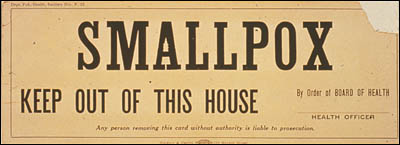Summary | Excerpt | Reviews | Beyond the book | Read-Alikes | Genres & Themes | Author Bio

Emma Donoghue digs up a long-forgotten, never-solved crime in a lyrical tale of love and bloodshed among lowlifes, capturing the pulse of a boomtown like no other.
Summer of 1876: San Francisco is in the fierce grip of a record-breaking heatwave and a smallpox epidemic. Through the window of a railroad saloon, a young woman called Jenny Bonnet is shot dead.
The survivor, her friend Blanche Beunon, is a French burlesque dancer. Over the next three days, she will risk everything to bring Jenny's murderer to justice - if he doesn't track her down first.
The story Blanche struggles to piece together is one of free-love bohemians, desperate paupers and arrogant millionaires; of jealous men, icy women and damaged children. It's the secret life of Jenny herself, a notorious character who breaks the law every morning by getting dressed: a charmer as slippery as the frogs she hunts.
In thrilling, cinematic style, Frog Music digs up a long-forgotten, never-solved crime. Full of songs that migrated across the world, Emma Donoghue's lyrical tale of love and bloodshed among lowlifes captures the pulse of a boomtown like no other.
Frog Music is the best kind of historical fiction: as authentic in its emotions and characterizations as it is in its archival details. Jenny's story—and, to a certain extent, Blanche's own—is one of creating new identities out of choice or necessity, of striving for new beginnings in the wake of loss and tragedy, of trying and sometimes failing to craft new beginnings for oneself. To say that Donoghue brings her roster of historical characters to life in her fiction is to understate the profound humanity and immediacy that she bestows on these figures out of the historical record...continued
Full Review
(555 words)
This review is available to non-members for a limited time. For full access,
become a member today.
(Reviewed by Norah Piehl).
Frog Music is set in San Francisco in 1876, during a summer notable not only for its record-setting heat waves but also for its smallpox epidemic, one of many that plagued the United States during the nineteenth century even as efforts were being made to eradicate the disease through vaccination and inoculation. According to Donoghue's afterword, the 1876 epidemic left 482 (of the roughly 200,000 residents) dead, and more than 1,600 infected with the highly infectious and debilitating disease.
 Donoghue depicts a San Francisco plagued by racism and xenophobia, in which white San Franciscans accused Chinese immigrants of spreading the disease, and in which Chinatown was seen as the epicenter of the plague. An article from the ...
Donoghue depicts a San Francisco plagued by racism and xenophobia, in which white San Franciscans accused Chinese immigrants of spreading the disease, and in which Chinatown was seen as the epicenter of the plague. An article from the ...
This "beyond the book" feature is available to non-members for a limited time. Join today for full access.

If you liked Frog Music, try these:

by Susanna Moore
Published 2024
From one of our most compelling and sensual writers comes a searing, immersive novel about a seminal and shameful moment in America's conquest of the West. Drawing partly from a true story, it brings to life a devastating Native American revolt and the woman caught in the middle of the conflict.

by Jane Smiley
Published 2023
From the beloved Pulitzer Prize-winning and best-selling author of A Thousand Acres: a rollicking murder mystery set in Gold Rush California, as two young prostitutes follow a trail of missing girls.